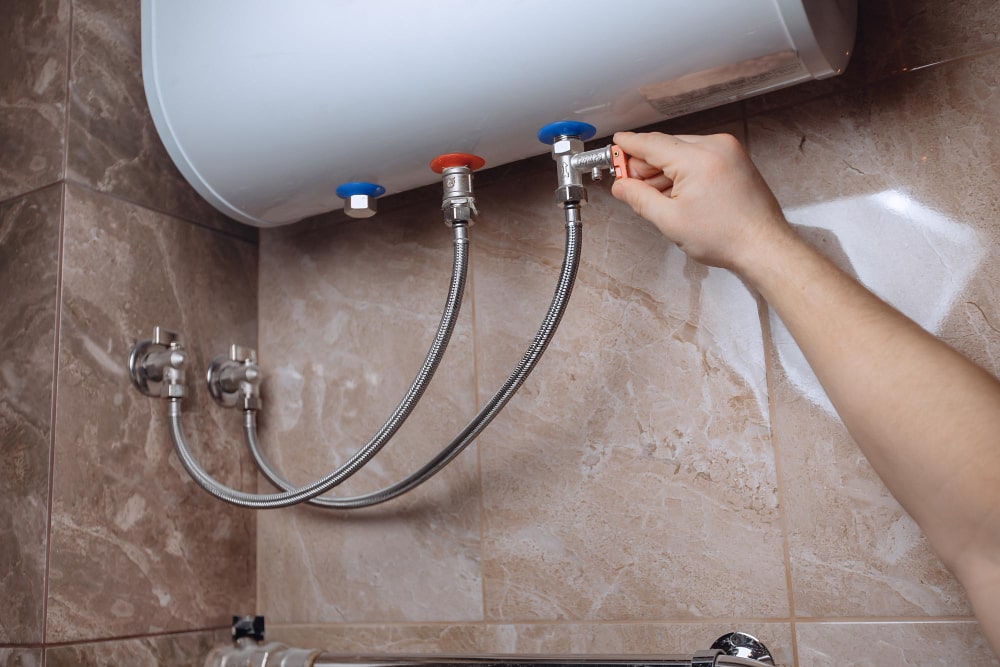Effective Techniques for Caring for Your Home's Hot Water SystemWays to Maintain Your Home's Hot Water System Functioning Well
Effective Techniques for Caring for Your Home's Hot Water SystemWays to Maintain Your Home's Hot Water System Functioning Well
Blog Article
Just how do you really feel in regards to How to Maintain a Hot Water Heater in a Few Simple Steps?

Hot water is vital for everyday comfort, whether it's for a refreshing shower or washing meals. To ensure your hot water system runs efficiently and lasts much longer, routine maintenance is essential. This post offers useful pointers and understandings on just how to keep your home's hot water system to stay clear of disturbances and pricey repairs.
Introduction
Keeping your home's warm water system could appear overwhelming, however with a few easy steps, you can ensure it runs efficiently for several years to find. This guide covers everything from recognizing your warm water system to do it yourself maintenance suggestions and knowing when to call in specialist help.
Importance of Maintaining Your Warm Water System
Routine maintenance not just expands the life expectancy of your hot water system but likewise guarantees it runs effectively. Overlooking maintenance can bring about reduced efficiency, higher power expenses, and even early failing of the system.
Indications Your Warm Water System Requirements Maintenance
Recognizing when your hot water system needs focus can avoid major concerns. Watch out for indicators such as irregular water temperature, weird sounds from the heater, or corroded water.
Comprehending Your Hot Water System
Prior to diving into maintenance jobs, it's useful to understand the fundamental components of your warm water system. Usually, this includes the hot water heater itself, pipes, anode poles, and temperature controls.
Monthly Upkeep Tasks
Regular month-to-month checks can help capture minor concerns before they rise.
Flushing the Hot Water Heater
Flushing your hot water heater removes debris buildup, boosting efficiency and lengthening its life.
Checking and Changing Anode Rods
Anode rods stop corrosion inside the storage tank. Inspecting and replacing them when broken is essential.
Checking and Readjusting Temperature Setups
Readjusting the temperature level settings makes certain optimal efficiency and safety.
DIY Tips for Upkeep
You can carry out numerous upkeep tasks yourself to maintain your hot water system in leading problem.
Checking for Leakages
Regularly check pipes and links for leaks, as these can cause water damages and higher expenses.
Examining Stress Relief Valves
Evaluating the pressure safety valve ensures it works properly and prevents excessive stress build-up.
Insulating Pipes
Protecting warm water pipelines decreases warm loss and can conserve power.
When to Call a Professional
While DIY upkeep is valuable, some concerns require expert know-how.
Facility Concerns Requiring Professional Assistance
Instances consist of significant leakages, electrical problems, or if your water heater is constantly underperforming.
Routine Expert Maintenance Advantages
Expert upkeep can consist of detailed inspections, tune-ups, and ensuring compliance with safety criteria.
Verdict
Normal upkeep of your home's warm water system is essential for performance, long life, and price savings. By following these tips and knowing when to seek professional help, you can ensure a reliable supply of hot water without unexpected disruptions.
How to Maintain an Instant Hot Water Heater
Before tinkering with your hot water heater, make sure that it’s not powered on. You also have to turn off the main circuit breaker and shut off the main gas line to prevent accidents. Also turn off the water valves connected to your unit to prevent water from flowing into and out of the appliance. 2. When you’re done, you have to detach the purge valves’ caps. These look like the letter “T” and are situated on either side of the water valves. Doing so will release any pressure that has accumulated inside the valves while at the same time avoid hot water from shooting out and burning your skin. 3. When the purge valves’ caps are removed, you have to connect your hosing lines to the valves. Your unit should have come with three hoses but if it didn’t, you can purchase these things from any hardware or home repair shops. You can also get them from retail stores that sell water heating systems. Read the user’s manual and follow it to complete this task properly. When the hosing lines are connected, open the purge port’s valves. 4. You should never use harsh chemical cleaners or solutions when cleaning your unit. Make use of white vinegar instead. It should be undiluted and you’ll probably use about 2 gallons. 5. Now flush your water heater. This task should probably take about 40 minutes. We can’t give you specific directions for this because the procedure is carried out depending on the type, model and brand of your heater. With that being said, refer to the user’s manual. 6. When you’re done draining the unit, you have to turn off the purge port valves again. Remove the hosing lines that you earlier installed on each of the water valves. Put the valve caps (purge port) back in their respective places and be very careful so as not to damage the rubber discs that are found inside these caps. 7. Now that everything’s back in place, check your user’s manual again to find out how to reactivate your water heating system. 8. Once it is working, turn one of your hot water faucets on just to let air pass through the heater’s water supply pipes. Leave the tap on until water flows smoothly out of it. https://www.orrplumbing.com/blog/2014/september/how-to-maintain-an-instant-hot-water-heater/

As a keen reader on Tips For Maintaining Your Hot Water Heater, I thought sharing that chunk was a smart idea. For those who liked our blog posting plz do not forget to pass it around. Bless you for your time. Revisit us soon.
Additional Resources Report this page